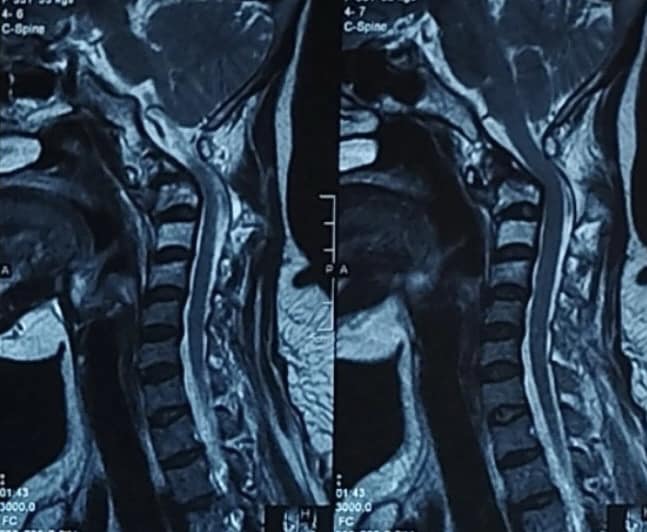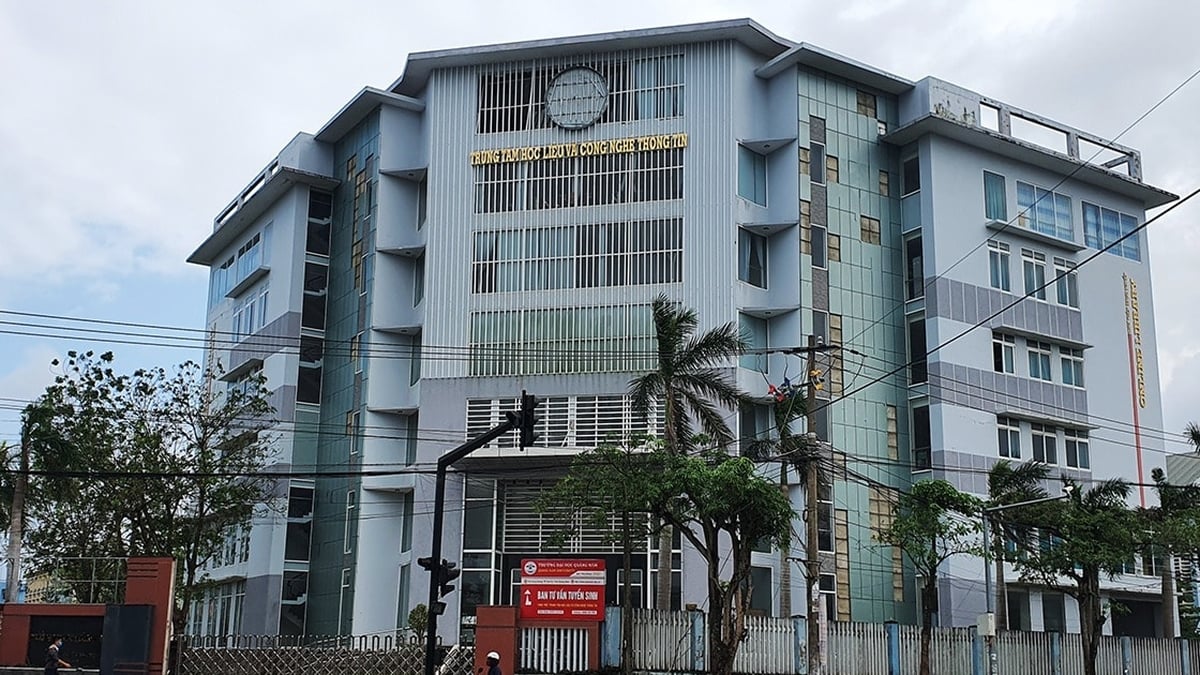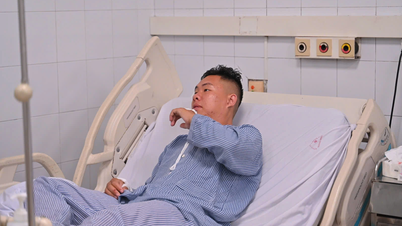Thinking it was just normal joint pain, a woman went to the doctor and discovered metastatic lung cancer.
Patient PTV, 54 years old, from Vinh Tuong district, Vinh Phuc province, was diagnosed with lung cancer that had metastasized to the high cervical spine, destroying the cervical vertebrae, causing pain and numbness in the hands.
The patient was consulted by doctors at K Hospital and treated with multimodality to help control the systemic disease, as well as treat the metastatic tumor in the dangerous location of the high cervical spine.
With a diagnosis of late-stage lung cancer; patient V. was treated with chemotherapy. During treatment, the disease progressed and metastasized to the cervical vertebrae C1 and C2.
According to the doctors, after examining and determining that the case was complicated, the chemical and radiotherapy experts as well as the surgeons of K Hospital consulted very carefully, and the doctors assessed that patient V. needed to be treated in combination with many specialties.

Preoperative X-ray, C2 spinal tumor, patient had pain and weakness, occasional shortness of breath due to spinal cord compression.
After 1 month, the lung tumor was well controlled, the high cervical spine tumor had shrunk, at this time the patient underwent cervical spine immobilization to resolve the patient's instability, preventing the risk of quadriplegia.
Dr. Nguyen Duc Lien, Head of the Department of Neurosurgery, K Hospital shared: "Injuries in the cervical vertebrae C1, C2 are difficult to treat and intervene because they contain very important centers of the spinal cord and brain: Medulla, respiratory center, limb movement,... In addition, the cervical spine C1, C2 also plays a role in supporting the skull, this is also a challenge for us when treating".
On April 12, the doctors of the Department of Neurosurgery, including Dr. Nguyen Duc Lien, Head of the Department, and Dr. Nguyen Thai Hoc and Dr. Nguyen Van Linh, performed the surgery. The surgery was carefully prepared from the positioning, because just bending the neck or stretching the neck too much can damage the spinal cord. The doctors performed the operations very carefully, intervening to relieve the spinal cord from compression first, then adjusting and fixing the cervical spine and skull.
4 days after surgery, the patient begins to practice sitting up and walking. Maintenance chemotherapy may be prescribed for 2-3 weeks.

Be careful with symptoms of prolonged bone and joint pain
Metastatic lung cancer (late stage) is the most advanced stage of lung cancer, the tumor cells have spread to other organs such as the liver, brain or bones. According to the US National Cancer Institute, the signs of late-stage lung cancer are relatively difficult to detect because they are easily confused with other medical problems such as tuberculosis, pneumonia... This leads to about 57% of lung cancer patients having metastasis when diagnosed.
According to doctors, about 30–40% of people with late-stage lung cancer develop bone metastases. In this case, pain is the main symptom and the risk of bone fractures increases.
Lung cancer with bone metastasis enters the final stage when cancer cells in the lungs are metastasizing to the musculoskeletal system in the body, causing a series of painful and uncomfortable symptoms for the patient.
Cancer cells will follow the blood circulation system and lymph nodes to metastasize to bone areas such as the pelvis, spine (especially the vertebrae in the lower abdomen and chest), leg bones (femur, foot bones) and arm bones.
In the metastatic stage, lung cancer patients will experience symptoms at the place where the cancer cells spread. Specifically, if the metastasis is to the bone, the patient will have symptoms such as bone pain, this is the first and most obvious manifestation of lung cancer metastasis to the bone. Initially, the body will ache as if the muscle is strained or subjected to strong impact, then this symptom will gradually become more severe, especially when the patient moves. In the case of lung cancer metastasis to the spine, the patient also has pain when lying down and pain at night.
Therefore, experts at K Hospital recommend that at first, patients think it is a common bone and joint disease even though they were previously treated for cancer. However, they should not be subjective, especially for patients who are being examined and treated for neurological and spinal diseases. If they feel the pain gradually increases and lasts for a long time (over 3 or 6 months), the pain in the spine does not improve with painkillers, or is accompanied by numbness and weakness in the limbs, they should be more vigilant about problems that are not simply degenerative.
K.M
Source































![[Photo] National Assembly Chairman Tran Thanh Man visits Vietnamese Heroic Mother Ta Thi Tran](https://vphoto.vietnam.vn/thumb/1200x675/vietnam/resource/IMAGE/2025/7/20/765c0bd057dd44ad83ab89fe0255b783)


































































Comment (0)